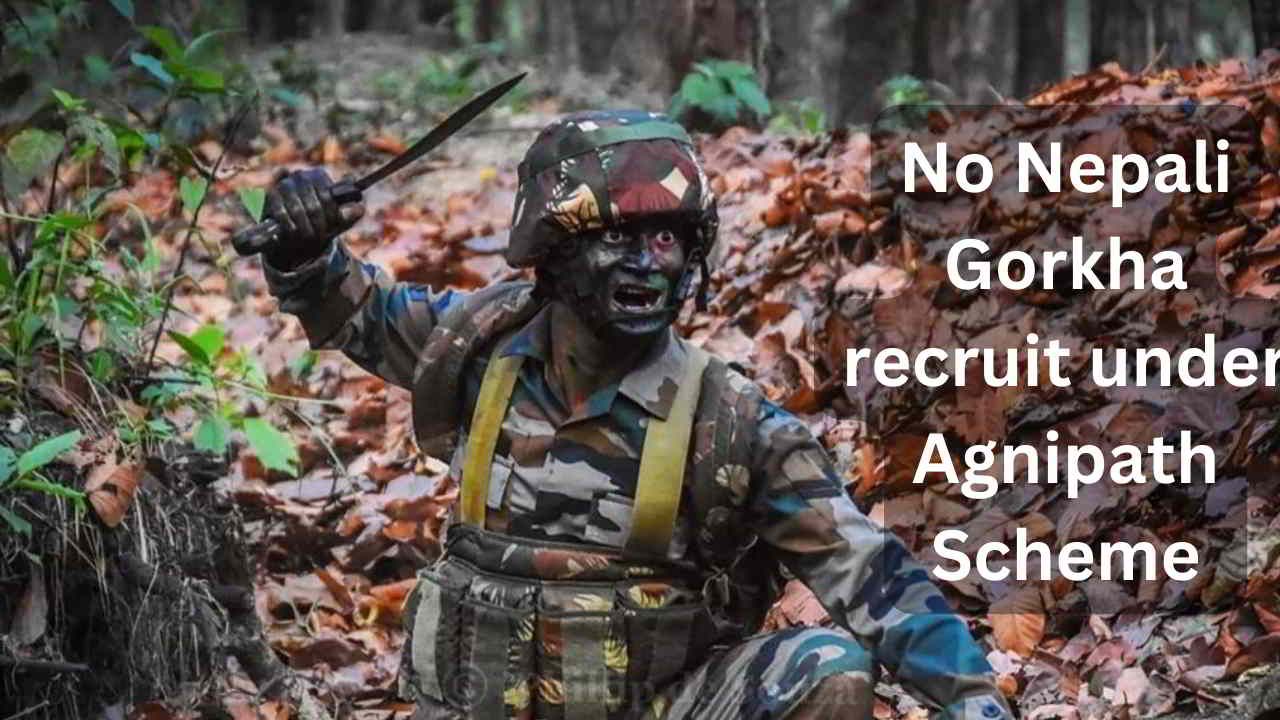Gorkha Regiment: In a significant shift in recruitment dynamics, the absence of Nepali Gorkhas has not yet impacted the Indian Army, as Indians fill their quota seats under the Agneepath Scheme. For the past eighteen months, Gorkhas of Nepali origin have not been enlisted, yet the army remains unaffected, with Gorkhas of Indian origin seamlessly occupying their vacant positions.

Gorkha Regiment: Agneepath Scheme Alters Recruitment Landscape
Approximately a year and a half ago, the Indian Army adopted the Agneepath Scheme, recruiting Agniveers to bolster its forces. However, Gorkhas of Nepali origin have been conspicuously absent from the recruitment process during this period. Surprisingly, this void has not hindered the army’s operations, as Gorkhas of Indian origin have successfully filled the vacant seats, maintaining the status quo within the military structure.
Notably, three batches of Agniveers have undergone recruitment under the Agneepath Scheme. Despite the absence of Nepali Gorkhas, all vacancies earmarked for Gorkhas have been efficiently occupied by their Indian counterparts. The Gorkha Regiment in the Indian Army, comprising seven regiments, shows no immediate need for recruitment beyond the Gorkha community.
Pakistan’s J-31 Stealth Fighter Deal: A Wake-Up Call for India’s Air Power Strategy
Historical Evolution of Gorkha Composition
Post-independence, the Indian Army introduced an additional Gorkha regiment, altering the demographic composition of the Gorkha soldiers. Initially, around 90 percent of Gorkha soldiers in the regiment hailed from Nepal, with only 10 percent being of Indian origin. Over time, this ratio transformed, leading to a distribution of 60 percent of Gorkhas from Nepal and 40 percent from India in the Gorkha regiments before the Agneepath Scheme’s implementation.
The period preceding the Agneepath Scheme saw a shortage of Gorkhas of Indian origin in the Indian Army. Youths from Kumaon and Garhwal in Uttarakhand were recruited into the Gorkha Regiment to address this gap. However, with the commencement of Agniveer’s recruitment, Nepal declined to participate in the scheme. Questions arose about the fate of the Gorkha Regiment, suggesting the inclusion of youths from Kumaon, Garhwal, Naga, and other tribes in case of Gorkha shortages.
Continuous Training of Agniveer Recruits
Army sources affirm that, currently, there is no need to explore alternatives. Two batches of Agniveer recruits have completed their training and joined their units, while the training of the third batch is underway. All three batches witnessed the recruitment of Gorkhas of Indian origin, maintaining the tradition of the Gorkha Regiment. These recruits undergo training at four different Gorkha Regimental Centres.
Despite ongoing discussions about the Gorkha Regiment’s composition due to the absence of Nepali Gorkhas, the impact remains minimal. The current recruitment of Gorkhas of Indian origin results from a two-year hiatus in recruitment before the implementation of the Agneepath Scheme, influenced by the COVID-19 pandemic. Presently, there is no indication of restarting recruitment from Nepal, with no discussions held in Nepal, and Nepali youth having relocated to other countries. The consequences of this absence might only become visible if recruitment remains halted for an extended period.
In conclusion, the Indian Army’s adaptation to the absence of Nepali Gorkhas showcases its recruitment processes’ flexibility and resilience, ensuring the Gorkha Regiment’s continued strength.